Methodological aspects in evolutionary and applied venomics (EUVEN WG2)
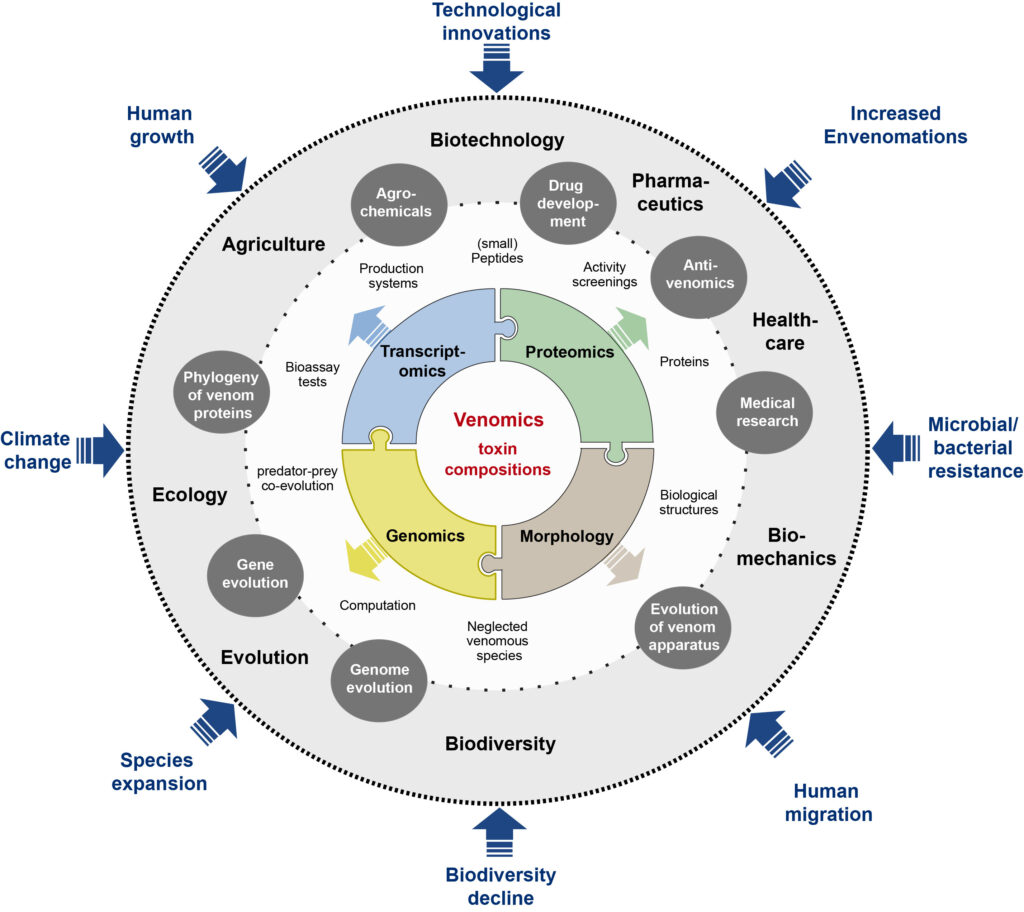
Current own projects
• Mechanisms of venom protein gene evolution in hymenopteran aculeates
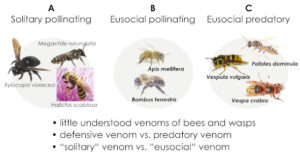
Paradoxically hymenopteran venoms are not well known except for a few, single species. In a combined proteo-transcriptomics and genomics approach venom compositions of understudied taxa (solitary bees and wasps) are analysed and finally a venom protein gene evolution assessed.
• Venom evolution in crustaceans especially remipedes, the first described venomous crustacean
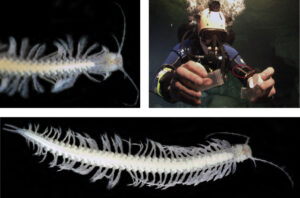
Collecting remipedes by cave diving. Remipedes are as closest relative to insects a key taxon to understand insect evolution but also venom evolution in insects and crustaceans. For that reason I am currently assessing the bioactivity of several remipede toxins from Xibalbanuis tukumensis (Xibalbins) and sequence its genome to address toxin gene and pancrustacean evolution in more depth via comparative genomics. See also the genome sequencing project: Xibalbase
• Venom evolution in dipterans, especially robber flies
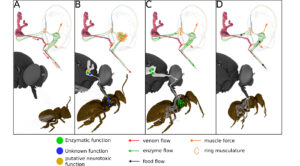
Reconstruction shows how the venom delivery is accomplished in robber flies. Currently genome data of several species is used to understand the toxin gene evolution in this group. First results indicate a diverse mode of mechanisms, involving de novo gene evolution. I am currently generating complementary high quality genome data (PacBio Sequel II) to analyze the venom gene origin and evolution.
• Venom diversity and toxin gene evolution of marine worms: polychaetes and nemerteans
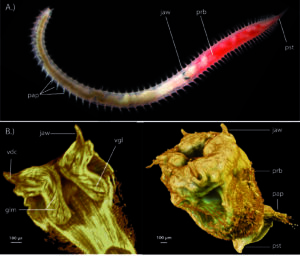
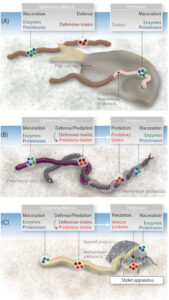
On the left: The venom system of the blood worm (Glycera dibranchiata). On the right: Proposed evolution of venom in ribbon worms (nemerteans) based on the proteo-transcriptomics analysis of Amphiporus lactifloreus.
Collaborative projects
• Venom evolution in centipedes (NHM London, University of Oslo/Brisbane)
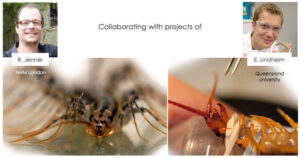
• Processes of venom protein evolution in the Borneo monitor lizard & anguimorph reptiles (LOEWE TBG)
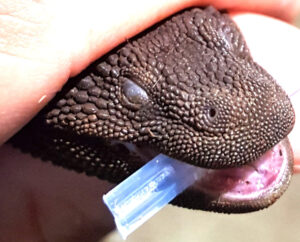
• Processes of venom protein evolution in the larger weever fish (LOEWE TBG)

Link to collaborators:
• Ronald Jenner, Department of Life Science, Natural History Museum London, UK
• Eivind Undheim, Advanced Imaging Center, University of Queensland, AUS
• Sebastien Dutertre, (CNRS), Institut des Biomolécules Max Mousseron, University Montpellier, F
• Alexander Blanke, Institute for Zoology, University of Cologne, D